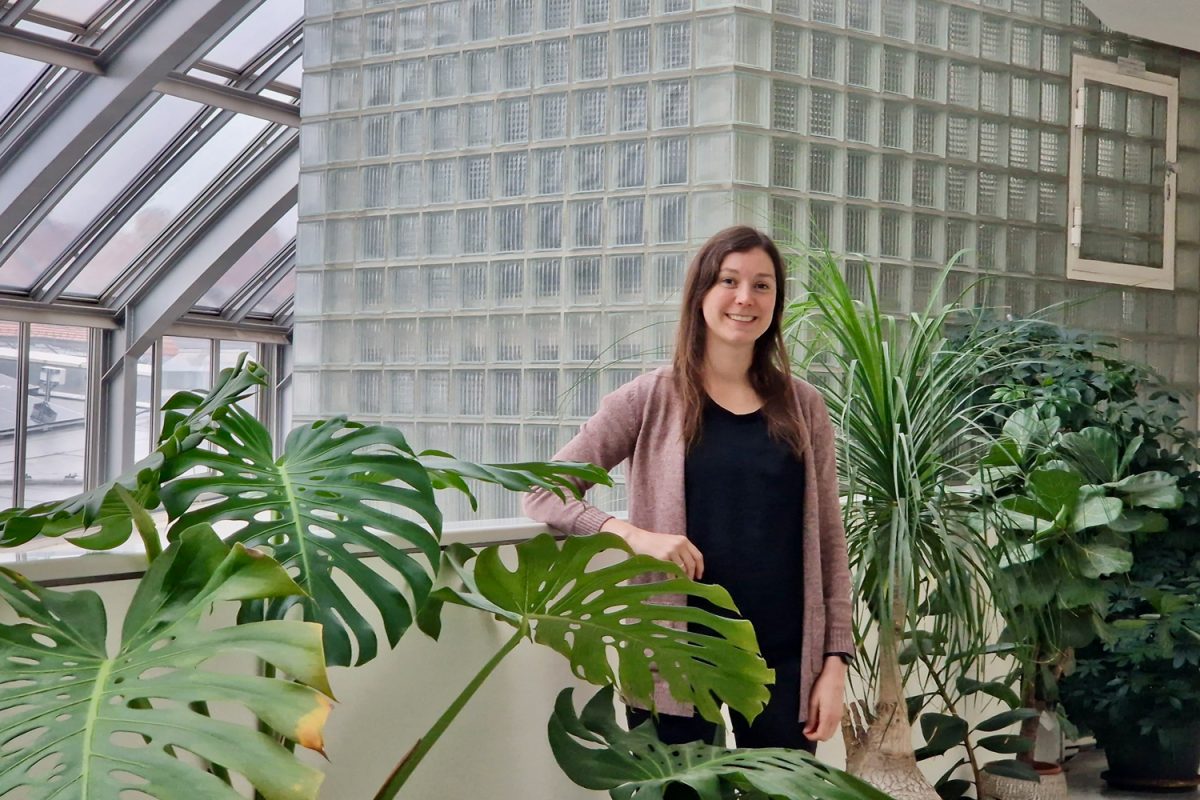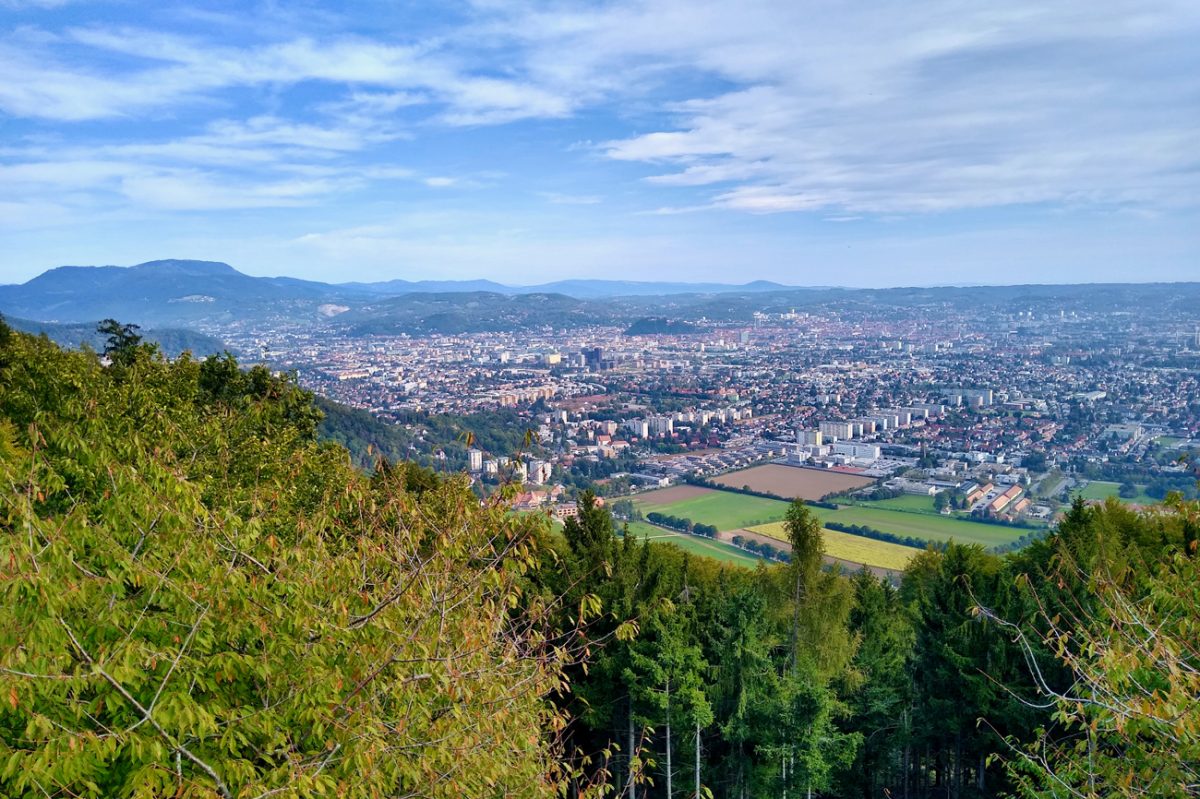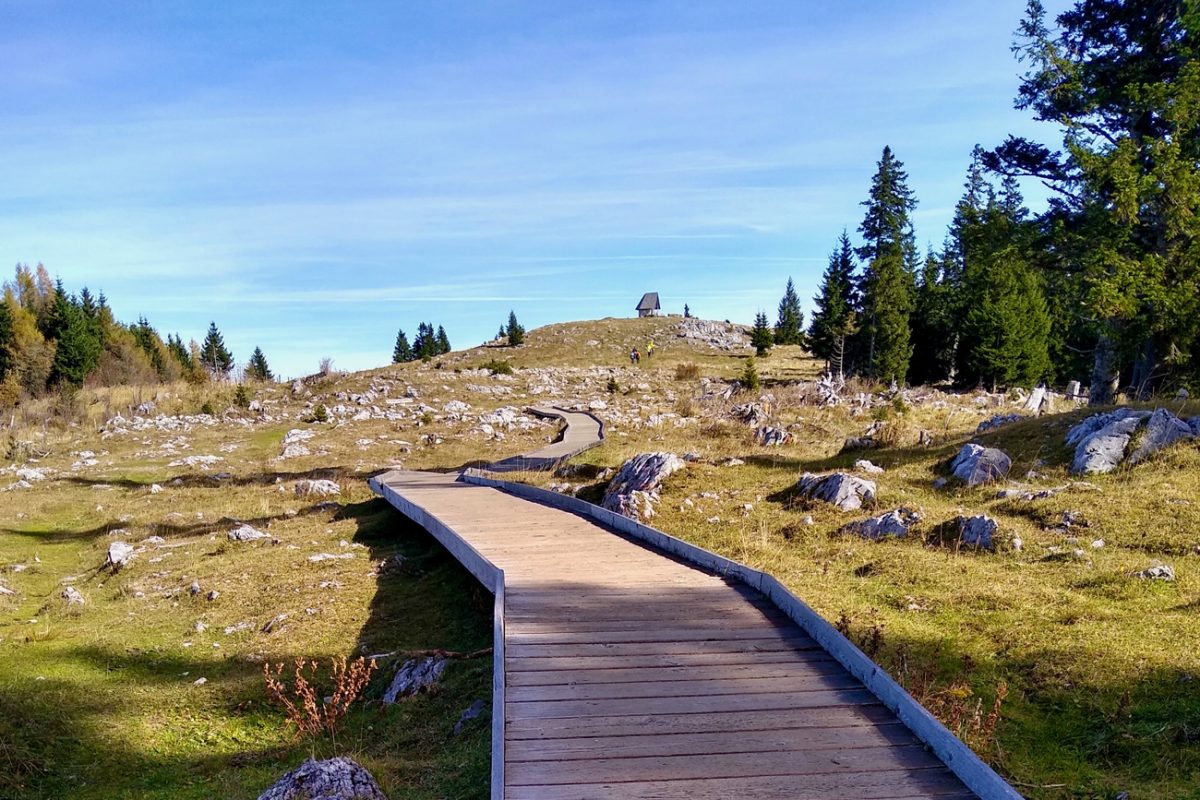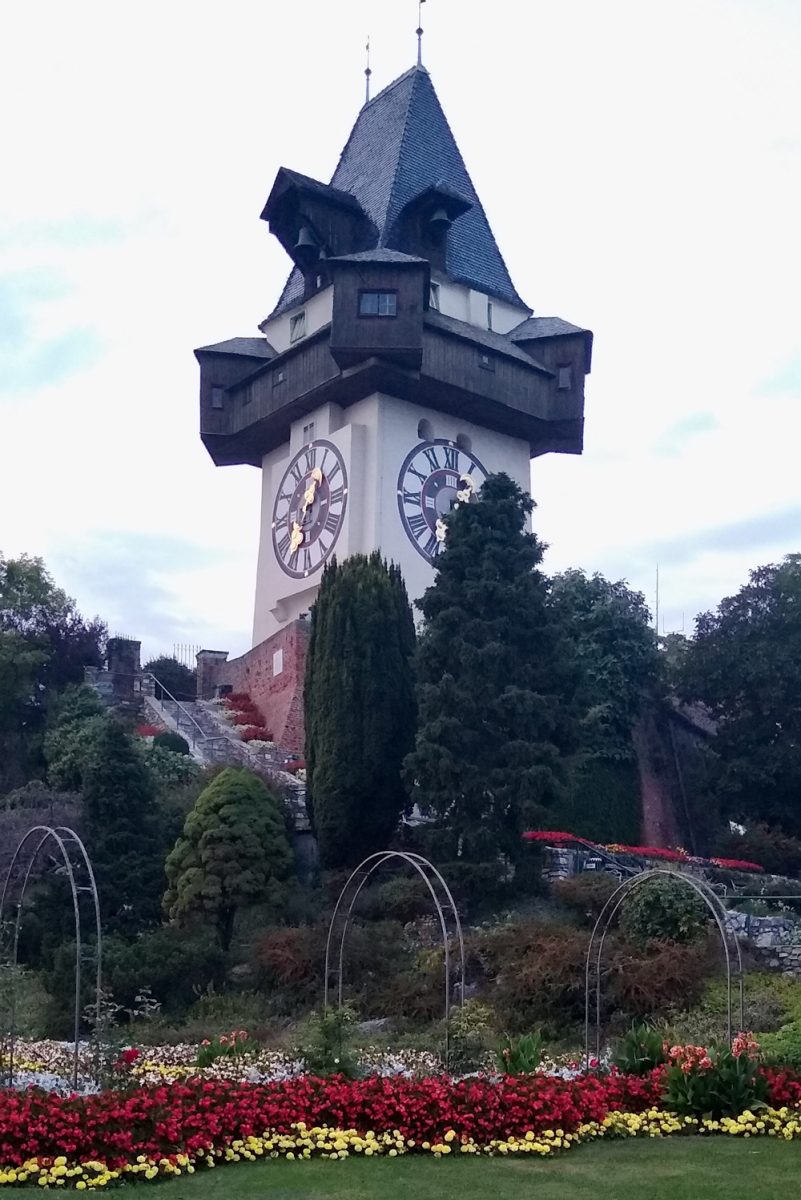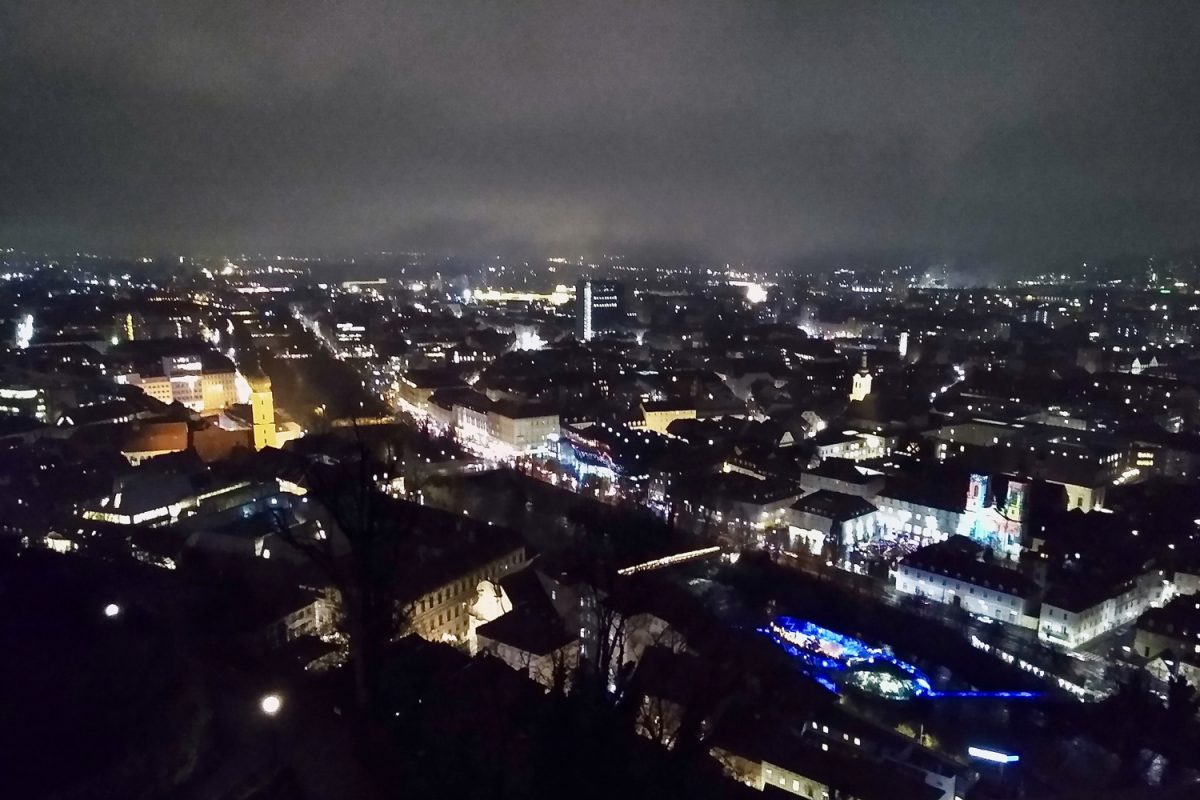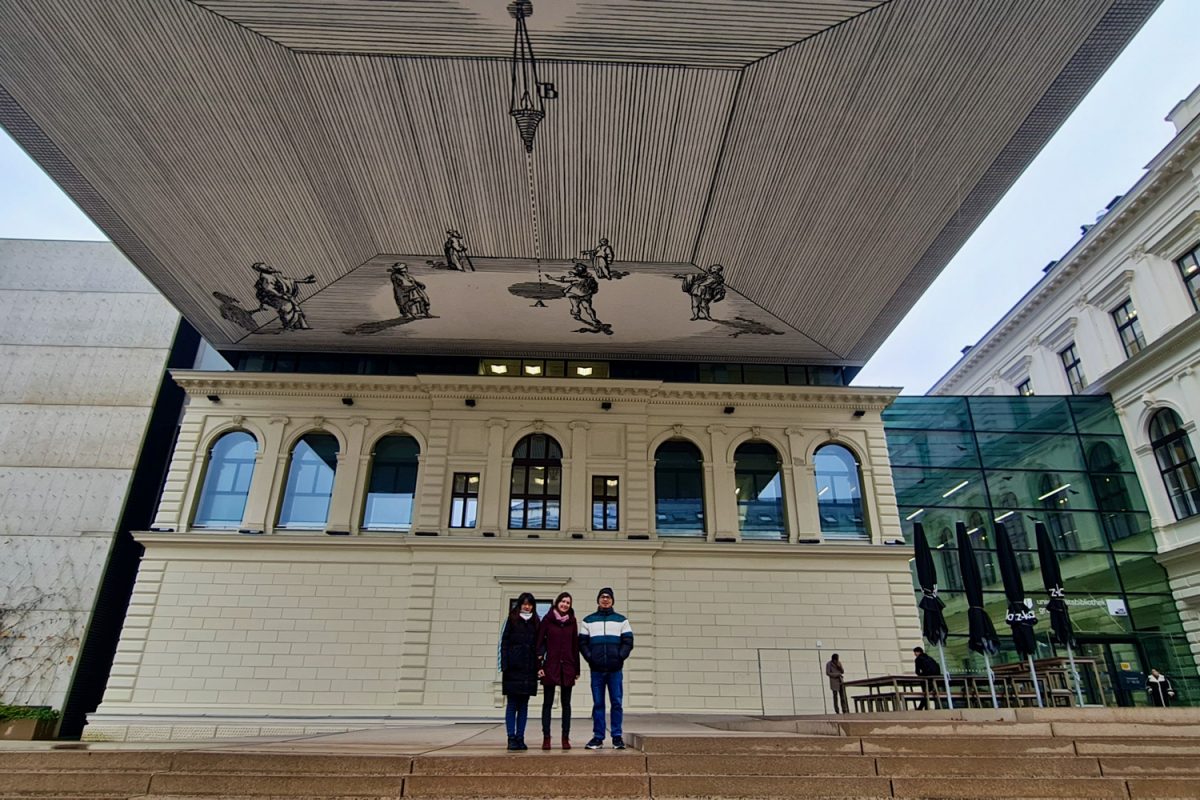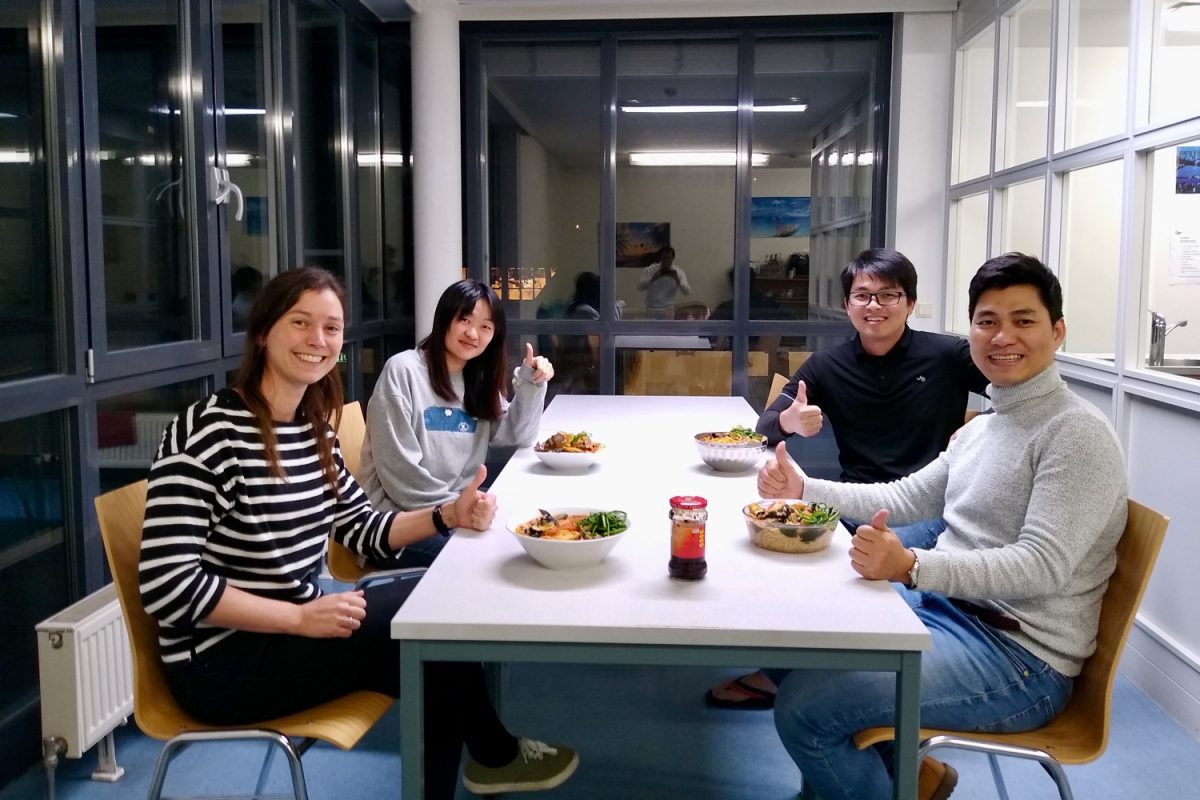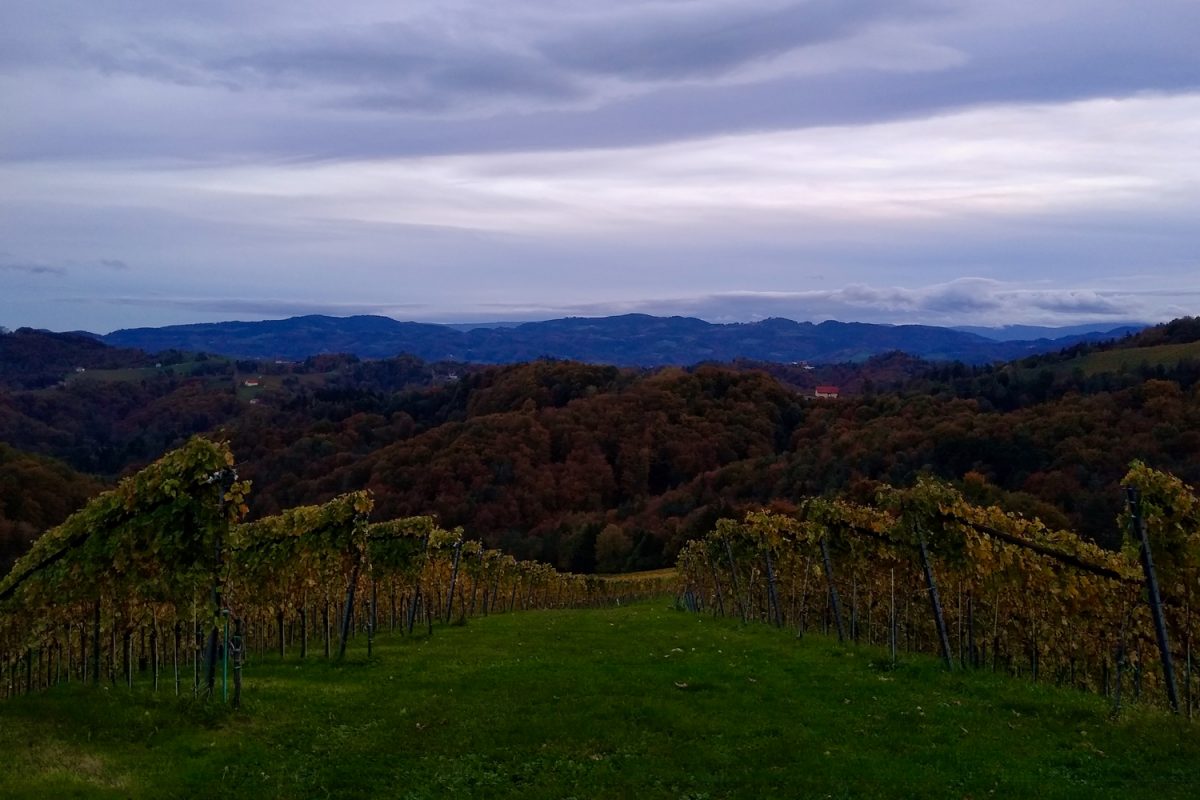Mail from …Graz PostDoc Cordula Reisch from the Institute for Partial Differential Equations talks about her research stay in Austria
General Information
This is where I live at the moment:
In Graz in the province of Styria in Austria.
That’s what I’m doing in Graz:
I am working together with Bao Q. Tang and Cinzia Soresina from the Institute of Mathematics and Scientific Computing at the University of Graz on a research project in the field of partial differential equations. We are working on equations that I used in my dissertation for modelling liver inflammation, in which the strength of the influx of immune cells into the liver tissue determines whether the infection heals or not.
In the current project, we are investigating more generally the impact of non-local effects on the stability of equilibrium states. For this purpose, we combine our expertise in applied analysis and numerical bifurcations to find out how strong the changes in a small spatial region may be in order not to disturb the stability of solutions. Related problems also lead to Turing patterns, which explain the pattern formation of zebrafish, for example. The problem we are investigating shows similar perturbation patterns, but has a different cause. During my time in Graz, we have certainly found many solutions as well as many open questions for further joint research projects.
My stay abroad takes…:
… nearly 4 months and is funded by a DAAD short scholarship for PostDocs.
That’s why I decided to go abroad:
The stay abroad gives me the opportunity to work focussed on a topic that, on the one hand, ties in with what I already know, but where I also learn a lot of new things. The exchange with colleagues on site allows a much faster progress than would otherwise be possible from a distance. At the same time, working at a different institute offers new perspectives on methods and the world of research. I already knew how international the group at the Institute of Mathematics at the University of Graz is thanks to a short stay in October 2022, and this gives me an insight into many different scientific systems.
Local life
This is how I live in Graz:
I live in a student residence in Graz, which was recommended to me by my local colleagues. On my floor, I share the kitchen with 13 flatmates from all over the world, and colleagues from my research group also live in the same building. It’s great because we often cook international dishes together and talk a lot about the similarities and differences between our home countries.
What makes research in Austria different from research in Germany?
The university system in Austria is very similar to the German system. The research environment is therefore comparable. One difference is the structure of the Department of Mathematics. While TU Braunschweig has five mathematical institutes, each with two to four professorships, all mathematical groups in Graz are united in one institute and share common rooms. This leads to a stronger exchange between the researchers, including the pizza lunch which takes place every two weeks.
Particularly typical for the country I’m staying at is:
Styria offers many local products that Graz – Austria’s “capital of flavours” – is proud of. Traditional dishes such as Steirer Schnitzel (breaded in pumpkin seeds), baked chicken and pumpkin seed oil are very typical of the region.
That’s what I learned here in the first three days:
In Austria, many people like to use more than one greeting: Servus, Pfiat di and Baba. In addition, “Pascht (scho)” is a versatile phrase that you can easily incorporate into your own language usage.
The biggest challenge during my stay has been …
The biggest challenge was certainly the switch to the short opening hours of supermarkets. In Graz, there are many small shops in residential areas that are often only open until 18:30 or 19:00. If you’re doing sport after work, it’s often too late to go shopping.
That’s what I will take home with me:
I learnt a huge amount during my stay, both mathematically and in other areas. In addition to apricot jam, pumpkin seed oil and butter beans, I also took home a new swimming technique and recipes from the Vietnamese kitchen.
Good to know
This is a local dish you definitely have to try:
A baked chicken salad with potatoes and pumpkin seed oil or butter bean salad. I’m also a big fan of the many variations of “Knödl” (Austrian dumplings), for example as an ingredient in a „Kaspressknödel“ soup.
What are the blunders to avoid in Austria?
A common mistake is the comparison with Germany. Precisely because Austria and Germany are similar in many respects, it is worthwhile to take a look at the Austrian perspective on Germany and not always portray everything you know from your own country in a positive light.
This is a tip I give to other researchers who want to go abroad:
In the doctoral and postdoctoral phase, the DAAD offers good scholarships, even for relatively short periods of time. The joint application with foreign partners was already an exciting experience for me and clarified our joint research questions. Once I was there, the student residence was the perfect accommodation for me, as I was able to meet people from different backgrounds outside the institute and broaden my own horizons.
For me, the stay abroad was also a great opportunity to try out a new sport. I had wanted to learn a proper crawl technique for swimming for a long time and used my new routine to take a swimming course to refine my technique. Coincidentally, I found a fellow swimmer in my office colleague and we regularly went to the pool together to swim our laps.

